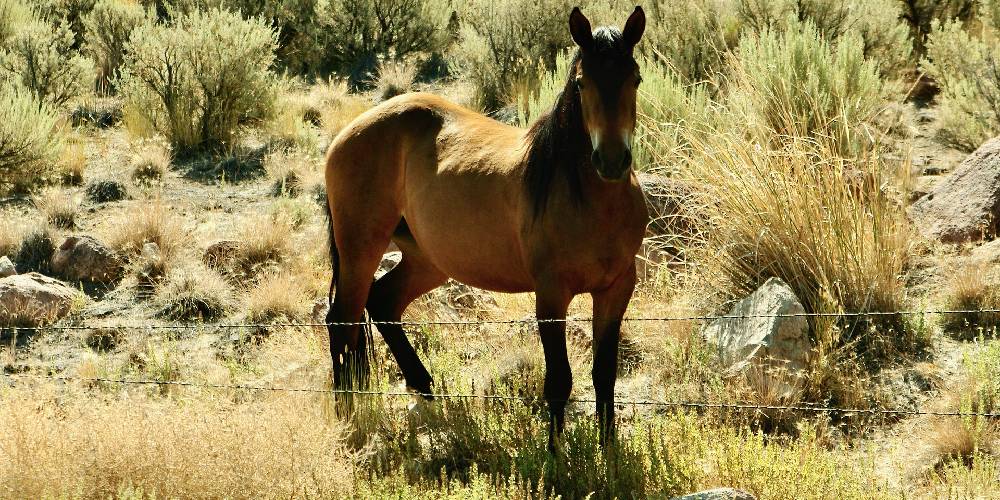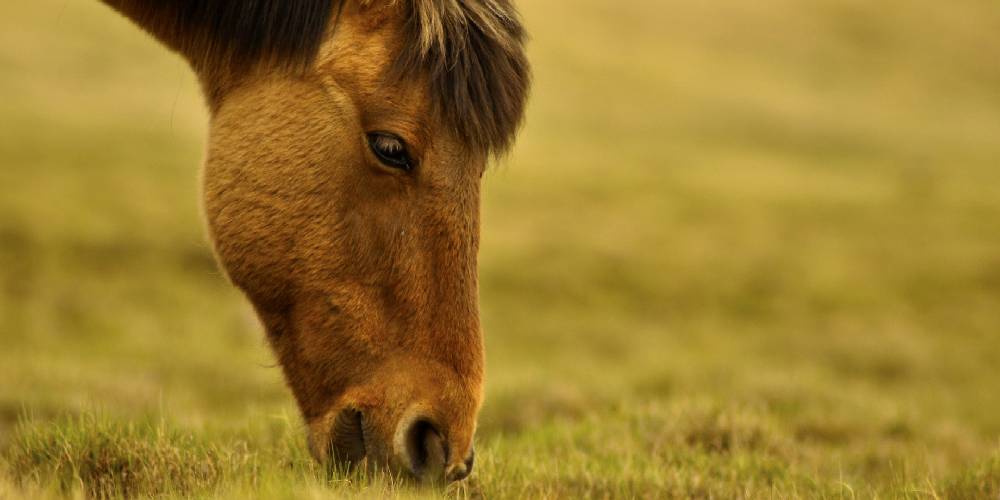The Barb is a hotblooded breed known for its hardiness and temperamental disposition. This breed is sometimes seen to be the ‘plain’ version of the Arabian horse.
What Is The Barb Horse?
Barb horses are an ancient breed that originated in North Africa. This breed, like the Arabian breed, is hotblooded and is known to be fairly temperamental. The Barb is widely known for its positive influence on other breeds and is often mixed into other bloodlines to improve other horses. This horse is smaller than most breeds in size and can come in any standard solid color including black, bay, gray, and chestnut.
How Big Are Barb Horses?
The Barb is a small breed that stands just between 14 and 15 hands high. Some members of this breed don’t even exceed the 14.2 hands to be considered a true horse.
Not only are Barbs short, but they also don’t weigh in very high on the scale. On average, a Barb might only weigh in at around 900 to 1000 pounds which is similar to that of a Mustang.
What Colors Can Barb Horses Be?

Barb horses, like the average horse, can be just the four standard colors seen in horses. These are:
- Black
- Bay
- Chestnut
- Gray
Barb horses can have white markings on their faces and legs, just not on their bodies. Dapples are acceptable body markings, but other markings aren’t allowed in this breed.
The most common coat color on a barb is gray.
The History Of The Barb Horse
The most notable thing in the history of the Barb breed is their great success as a cavalry horse. This breed, though now seen all around the world, was originated in North Africa, specifically in Morocco, Tunisia, and Algeria.
The exact origins of this breed are unknown and there is actually a great debate between whether or not the Barb or the Arabian came first. It is believed that the Barb breed carries some Arabian blood as well which offers more evidence to the Arabian coming before the Barb.
The Barb is a breed that is accustomed to the desert and it thrives up until this day in the hot deserts of Africa.
The Barb horse is believed to be a direct ancestor of the old Spanish horses. During the Moorish invasions, the Barb was brought to Spain where it influenced certain Spanish breeds including the Andalusian. This breed was also brought to France where it bred with and influenced the Camargue and Limousin breeds.
Because this breed carries the traits of great endurance ans stamina, the Barb has been used in racing and for breeding racehorses since the late 1300s.
Physical Description Of The Barb

The Barb is a fairly plain breed in appearance with a typically convex shape. The breed is typically seen with a Roman nose or an outwardly curved face and usually has a narrow head. Like the Arabian, the Barb has very expressive eyes, fine nostrils, and curved ears. The neck of a Barb is very slightly arched and they typically carry very prominent withers.
The Barb is a very fast horse, faster than most Arabians, so it is surprising to see that a great number of these horses have a straight shoulder with little slope.
Barbs are known to be sound horses and this is thanks to their hard strong feet, solid legs, and overall hardiness. Though this breed is sometimes seen to be cow hocked, this defect rarely affects them.
Like most Arabs, the Barb is a fairly narrow horse though they have a deep chest and girth.
Unlike the Arabian, the Barb has a low-set tail making it stand apart from most horses, especially hot bloods.
How To Identify The Barb
Tail
The Barb is sometimes easy to identify just by looking at their tails. This breed is known for having a low-set tail as opposed to the preferably high-set tail of other breeds like the Saddlebred or the Arabian.
Hooves
The hooves of a Barb are very hard and strong similar to those of a wild horse like the American Mustang. The way to tell a Barb apart from another breed is that their hooves are typically more boxy in shape than other breeds and their hooves are a lot stronger and have less issues.
Legs
The secret behind this horse’s soundness is attributed to their legs. The Barb has very short hard ans sturdy legs with strong bones and hard tendons. This part of their body is one of the most important as the health of the leg determines the health and usefulness of the horse.
Size
Barbs are small horses that don’t stand over 15 hands high. The Barb is often confused with being a pony because of their smaller than average size.
Temperament
The Barb is a very temperamental breed and is known for requiring an experienced hand. Though some of these horses get along well with horses and people alike, most are known to be little hard to get along with.
What The Barb Excels In

The Barb is a very versatile and adaptable breed that excels in a number of types of riding and equine sports. Some examples of things the breed excels in include:
Endurance
The Barb is a breed known for its incredible stamina and makes an endurance horse comparable to the Arabian. The average Barb can travel great distances in just one day so with some stamina and endurance training and practice, the Barb can make an excellent endurance competition horse.
Ceremonial Riding
Barbs who live in certain areas are sometimes used for ceremonial riding where they are decorated with robes and semi-precious gems to show off the wealth of their owner. These ceremonial and performance riding practices primarily take place in the countries that the Barb is native to (Morocco, Algeria, and Tunisia).
Pleasure or General Riding
The most common use for the Barb is for pleasure riding. Barb horses used for pleasure riding are seen ridden in both English and Western styles though western might be more commonly seen with this breed.
Equestrian Games
The Barb is seen used in certain equestrian games on top of their typical use in general riding. One of the games they are commonly seen in is polo as this is a fast paced sport and the Barb has the stamina to participate in such events.
How Long Do Barbs Live?
Barbs have a shorter lifespan than most horses do regardless of their smaller size, exceptional hardiness, and soundness. The Barb, on average, lives to only be around 20 to 25 years of age, though some are known to reach to nearly 30 in age.
FAQs On Barb Horses

Are Barb horses rare?
Barb horses aren’t technically considered rare and are not considered an endangered species, but they aren’t necessarily common either. This breed is definitely most popular in the countries that it was descended from rather than outside ones.
Do Barbs get along well with children?
No, because of their temperamental and fiery nature, the barb doesn’t typically get along well with children. Breeds like the Quarter Horse might be better suited fro children over the Barb.
Is this an expensive breed?
No, Barbs aren’t typically very expensive breeds. The average price for a Barb is around $6,000 (USD) making it average priced for a horse.
What came first, the Barb or the Arabian?
This is a question that is actually kind of hard to answer. There is an ongoing debate determining which of these horses came first, but it is thought that it was the Arabian that in fact came first because of the breed’s influence on the Barb.

